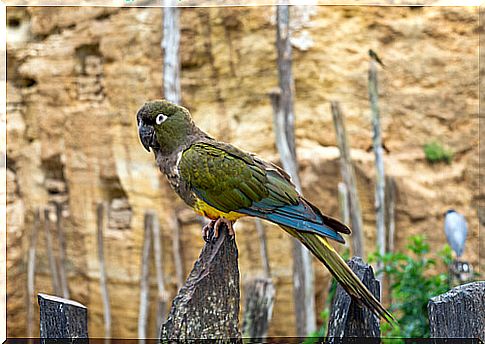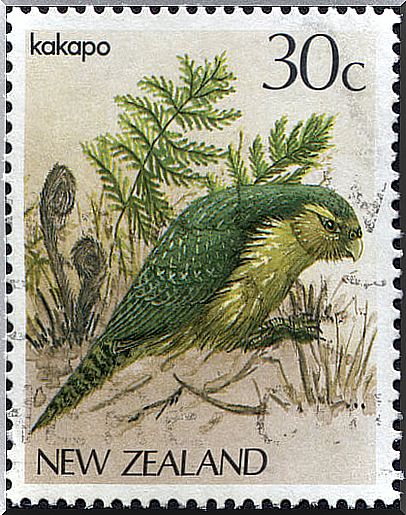Kakapo: Feeding And Reproduction

Kakapo is the name of a very beautiful bird species, which is currently in danger of extinction. The kakapo belongs to the parrot family and inhabits two of the New Zealand islands. It is a large, robust looking bird, whose physical structure makes it a non-flying bird.
Before the s. XIX, these birds had a huge population in different areas of New Zealand. However, due to various factors, the kakapo are almost extinct. At the end of the s. XX the last kakapo that were not in protected areas died.
The a ve kakapo is protected in preservation zones near the South Pacific. In these areas, a Kakapo has special care for its survival in the wild. However, despite the efforts of researchers and scientists, the kakapo population continues to decline. At present, only 40 specimens have been registered in the wild, a very small number.
This parrot is also known as ‘owl parrot’, as it is a bird with nocturnal habits. In addition, the shape of its body and its behavior can resemble that of an owl. The kakapo has a beautiful color and very large eyes that give it a unique appearance.
As adults, these birds can weigh between three and four kilos. Being a non-flying bird, like chickens, they spend most of their lives on the ground or in trees with low branches.
Kakapo extinction and conservation measures
Kakapo are birds that do not move very fast, and cannot fly. For this reason, they are easy prey for predators. When New Zealand began to become a commercial and productive destination, diverse communities were formed close to the natural habitats of the kakapo.

Many foreign families that settled in New Zealand brought pets that were not native to the islands. Dogs, in particular, quickly became one of the kakapo’s fiercest predators.
However, kakapos were also hunted by cats, possums, weasels, and rats. Although smaller predators cannot kill an adult Kakapo, they can eliminate the young. These birds make their nests on the ground, and the eggs are vulnerable to any threat.
Of course, this bird was also eaten by humans for food. Due to its large size and easy hunting, it was one of the favorite foods of the colonists. This practice considerably affected the total population of kakapos and their numbers only decreased without finding equilibrium.
With a view to protecting the species, experts have focused on two fundamental measures: protection of natural habitats and relocation of reserves. New Zealand has endeavored to take adequate measures to conserve many endangered animals.
Among these animals is, of course, the kakapo. Scientists have determined what are some of the natural habitats of this bird. After locating a habitat, we have sought to protect this area in optimal conditions.
On the other hand, there is the relocation of reserves. It is clear that not all natural habitats can be protected. Human activity sometimes needs to make use of these geographic areas. For this reason, experts have endeavored to turn designated geographic areas into ideal reserves for endangered animals.

Reproduction
Kakapos are incredibly delicate when it comes to breeding and breeding. Technically, the kakapo is a species that breeds in the summer and fall times. However, this does not happen every year. A kakapo only reproduces in years when there are a lot of fruits and when the temperature is correct.
In recent years it has been observed that kakapos only mate when certain types of native trees bear fruit. These trees flower and bear fruit in two to four years. These conditions make their reproduction increasingly sporadic. In addition, each female can lay one to three eggs, but this number is getting smaller and smaller.
In order for two kakapos to mate, one male must attract the attention of the females. After fertilization, the males walk away from the process: a male Kakapo does not participate in the process of developing the young, so the males do not help incubate or raise the chicks.
Kakapo diet
Kakapo are food-gathering animals that can be found close to the ground. Its most frequent foods are nuts and seeds, which are complemented by fruits and some insects. In addition, kakapos feed on various types of vegetation. Its diet includes leaves, buds and flowers, in addition to some types of bark and roots. Kakapos have also been recorded to eat rhizomes and bulbs.
Of course, the feeding of these birds depends on the season and the environment. On some occasions, due to weather conditions, kakapos are forced to undertake long journeys in search of food.









